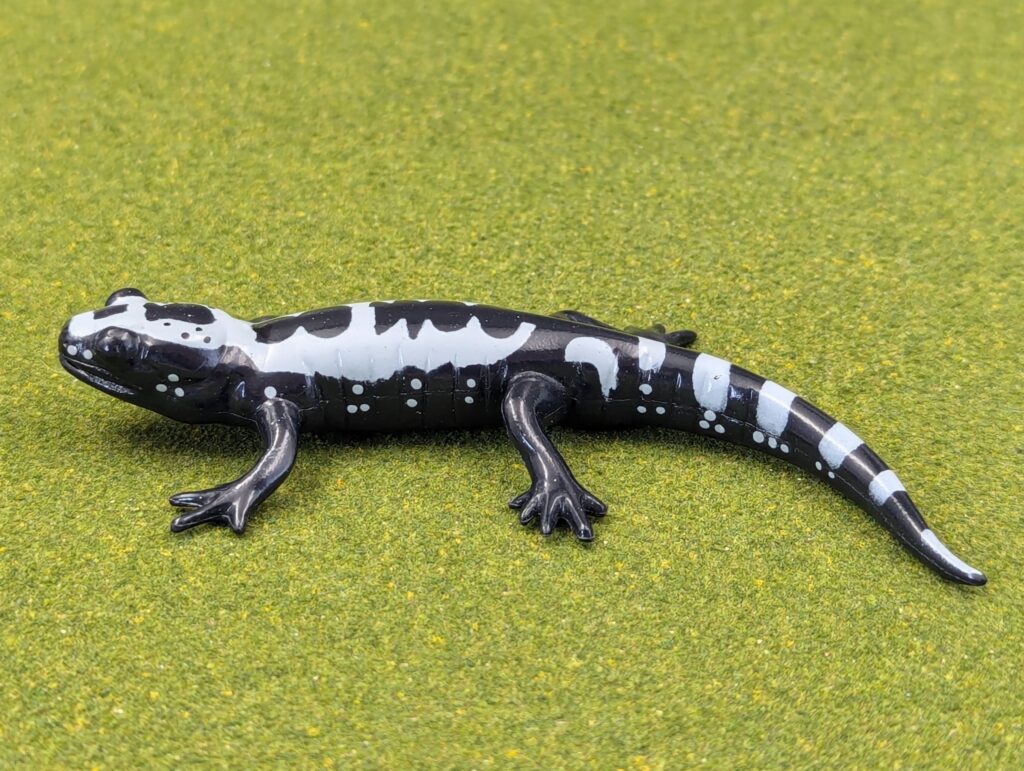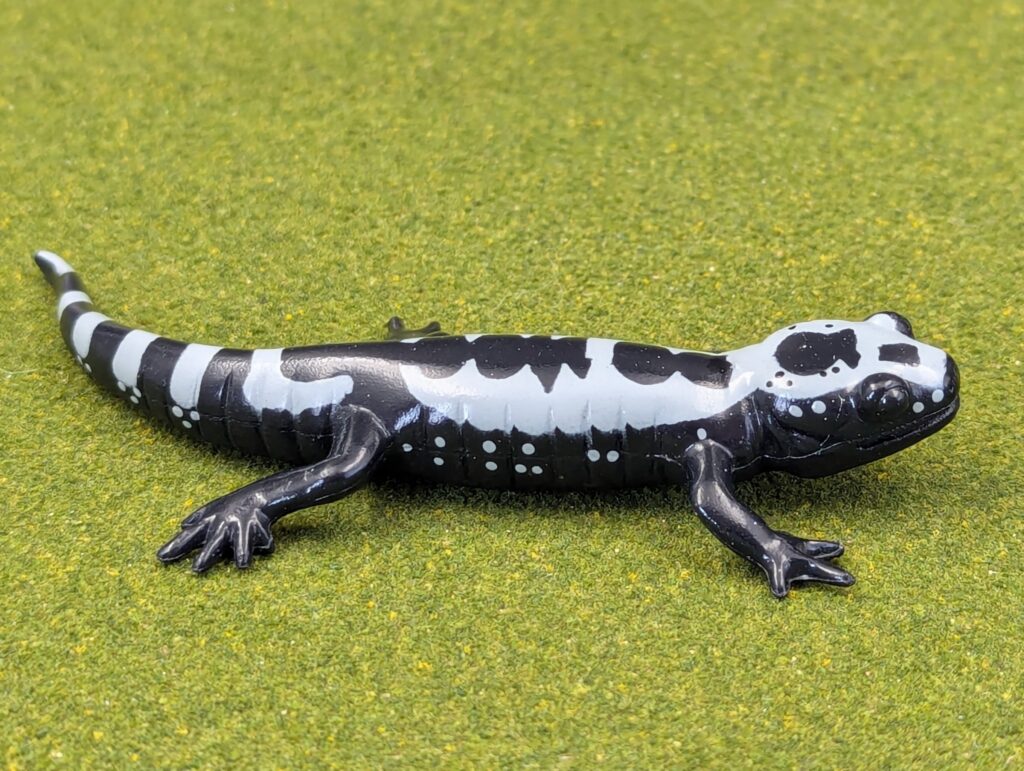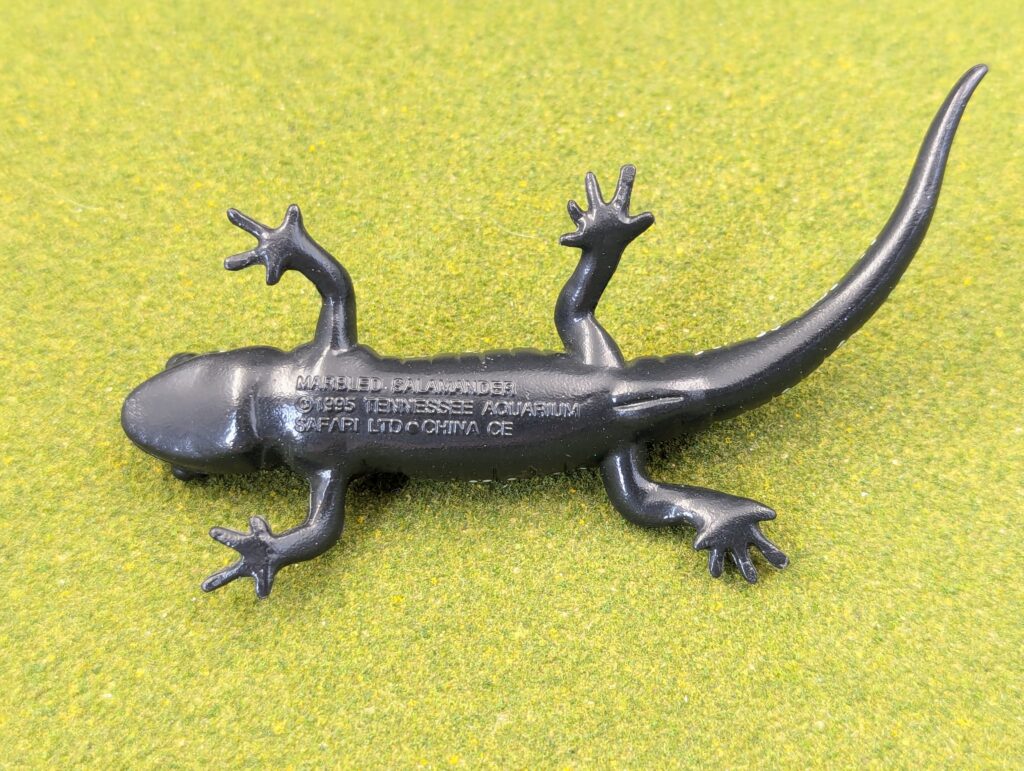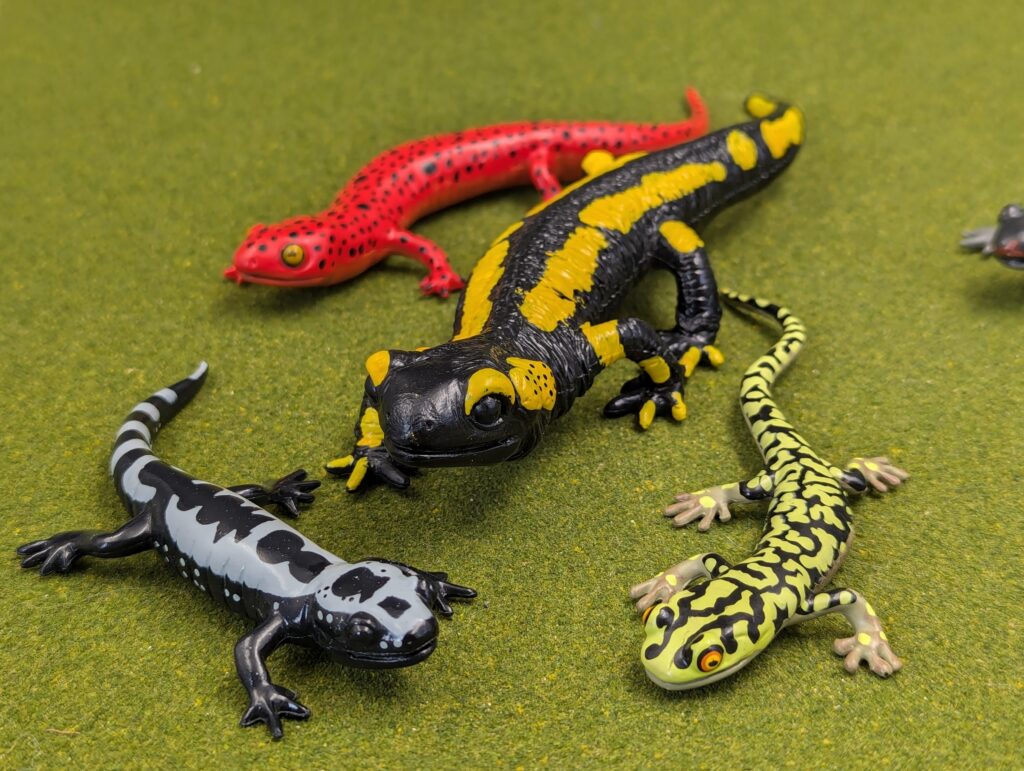
The next figure to discuss from the Safari Tennessee Aquarium is the marbled salamander, Ambystoma opacum, item number 210372. This is pretty much the smallest figure in the series, which is fitting as the marbled salamander is relatively small for it’s genus. Unlike the last few salamander figures we’ve looked at, this species is a member of the Ambystomatidae, the mole and giant salamanders; Ambystoma is the mole salamanders. Congenerics include familiar species like axolotl and tiger salamanders, but the marble is something smaller and different, reaching at most a length of 11cm. As the name mole salamander would imply, this species digs down in burrows or under logs. That said they aren’t as strong of burrowers as some congenerics, so they rely on their habitat to keep them safe–meaning drying out and temperature, etc, are major risks for them.


Like the last few salamanders, the marble salamander is found throughout much of the eastern United States, from New Hampshire to Texas and Florida. They prefer habitats with moist, soft soils, in forest and woodlands, and their associated wetlands (although they will cross more open habitat). Adults are fully terrestrial, but flooded regions are required for breeding and covered habitat is preferred. In northern regions, they can go into a torpor state when it gets cold. They are predators of a variety of invertebrates like worms, slugs, insects, and other arthropods and molluscs. They are listed as Least Concern by the IUCN–and are the state salamander of North Carolina! They also have poison glands to repel predators, although I’m not certain if their distinct colours are aposematic or camouflage!

This figure has the characteristic colour pattern of a marbled salamander, a mostly black body and belly, with an irregular light pattern across the back and small spots on the sides. Interestingly, the figure can be easily identified to be a female! The pattern colouring is light grey, a characteristic of females. As well, the marbled pattern is not present in bands, but in an irregular, asymmetric pattern that leaves more black on the back. This is interesting for the figure, as it would require very specific choices to be made (as an aside, there are a couple of other marbled salamander figures, which do have the more male-oriented bands, but are not particularly white). The back of the head is also patterned with the light grey marking and the eyes are sculpted as bulging but shiny black. The legs have no pattern, which is correct.

The figure size is about 12.4 cm long–just a little larger than life size, which is surprising, but still effectively 1:1 scale. The body is stocky, with a short tail curved to the animal’s left. The figure is sculpted as somewhat slender relative to some photos I saw, where some live animals can be quite chunky. The figure is sculpted with its head up, and legs spread out. Costal folds and the cloacal bulge are present as well. The head is also somewhat distinct from the body via the neck; on the previous salamander figures the neck was not as distinct between the head and body. Overall, the figure looks like a very small, annoyed salamander. Apparently, females (like this figure represents) protect their eggs…but will abandon them at the first sign of disturbance…or even the perception of a disturbance. So don’t annoy them, I guess?

As I keep saying for this series, this is a fantastic model of this species that has yet to be captured again by another company. I mentioneda few other figures of this species, but they are not at all up to this standard (although more banded, so male-coloured). This is once again a lovely, museum-quality figure that has not yet been matched–and again, despite being so hard to find now, they are worth the search.

Disclaimer: links to Ebay and Amazon on the AnimalToyBlog are affiliate links, so we make a small commission if you use them. Thanks for supporting us!



